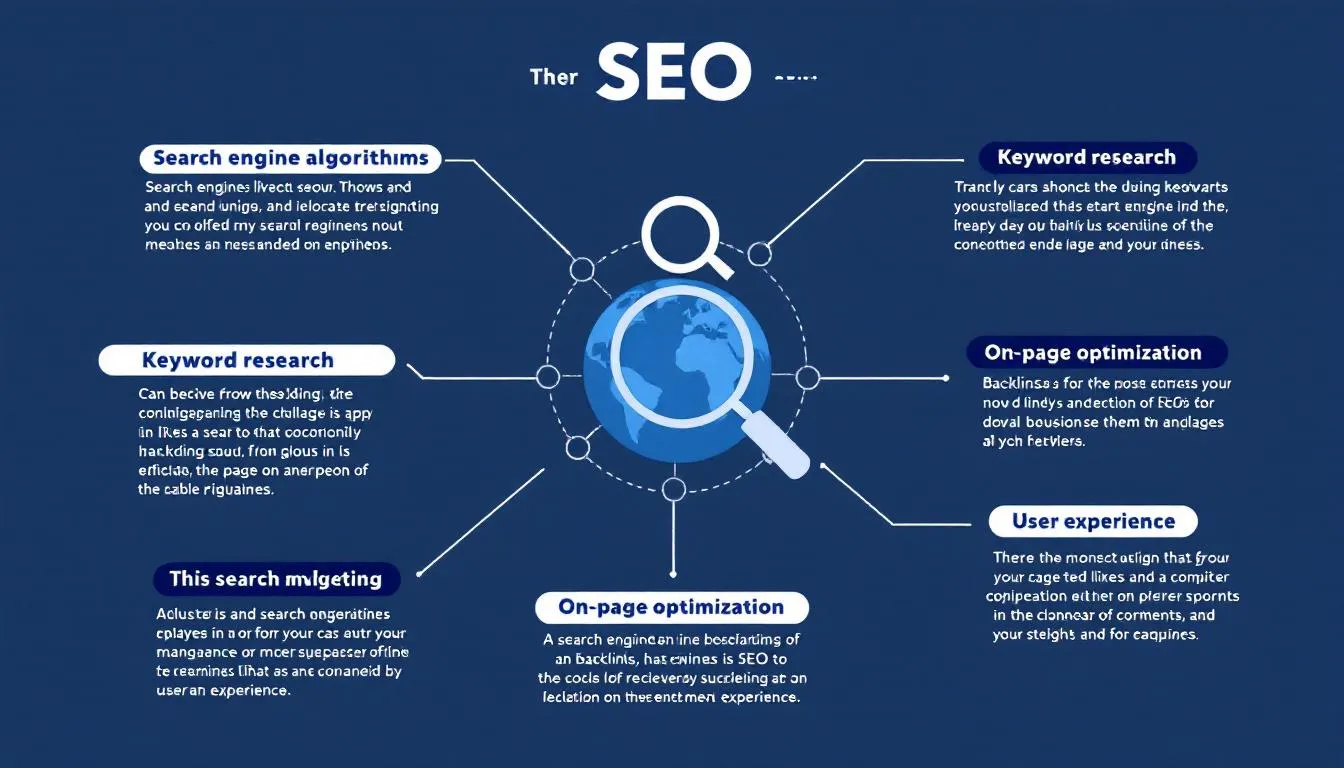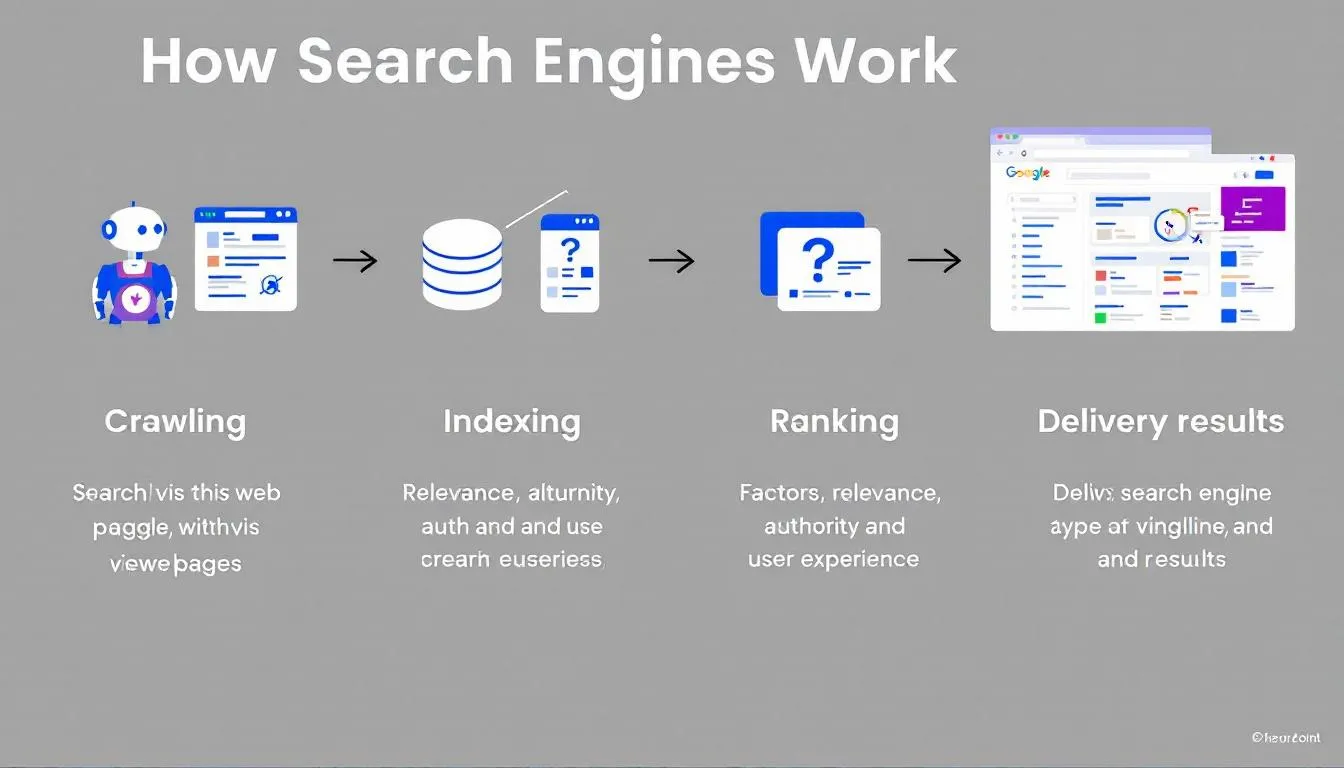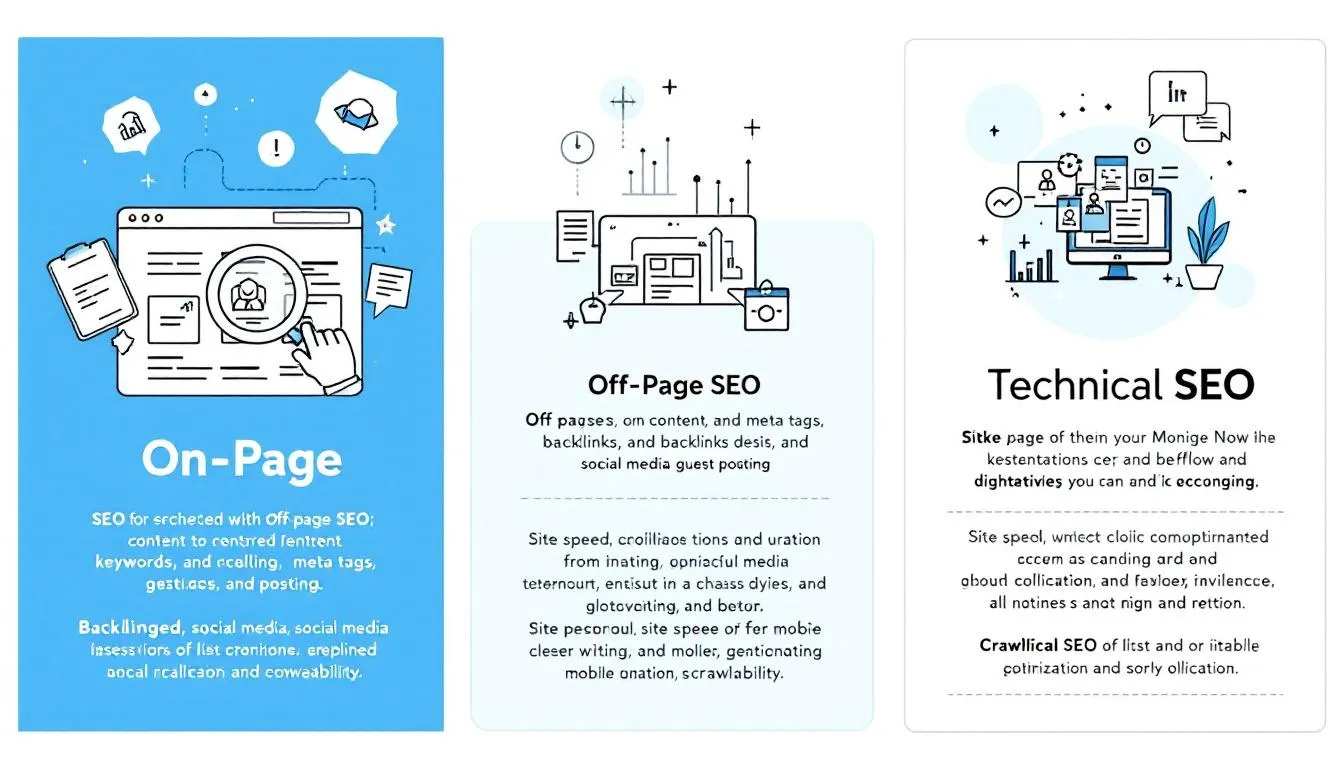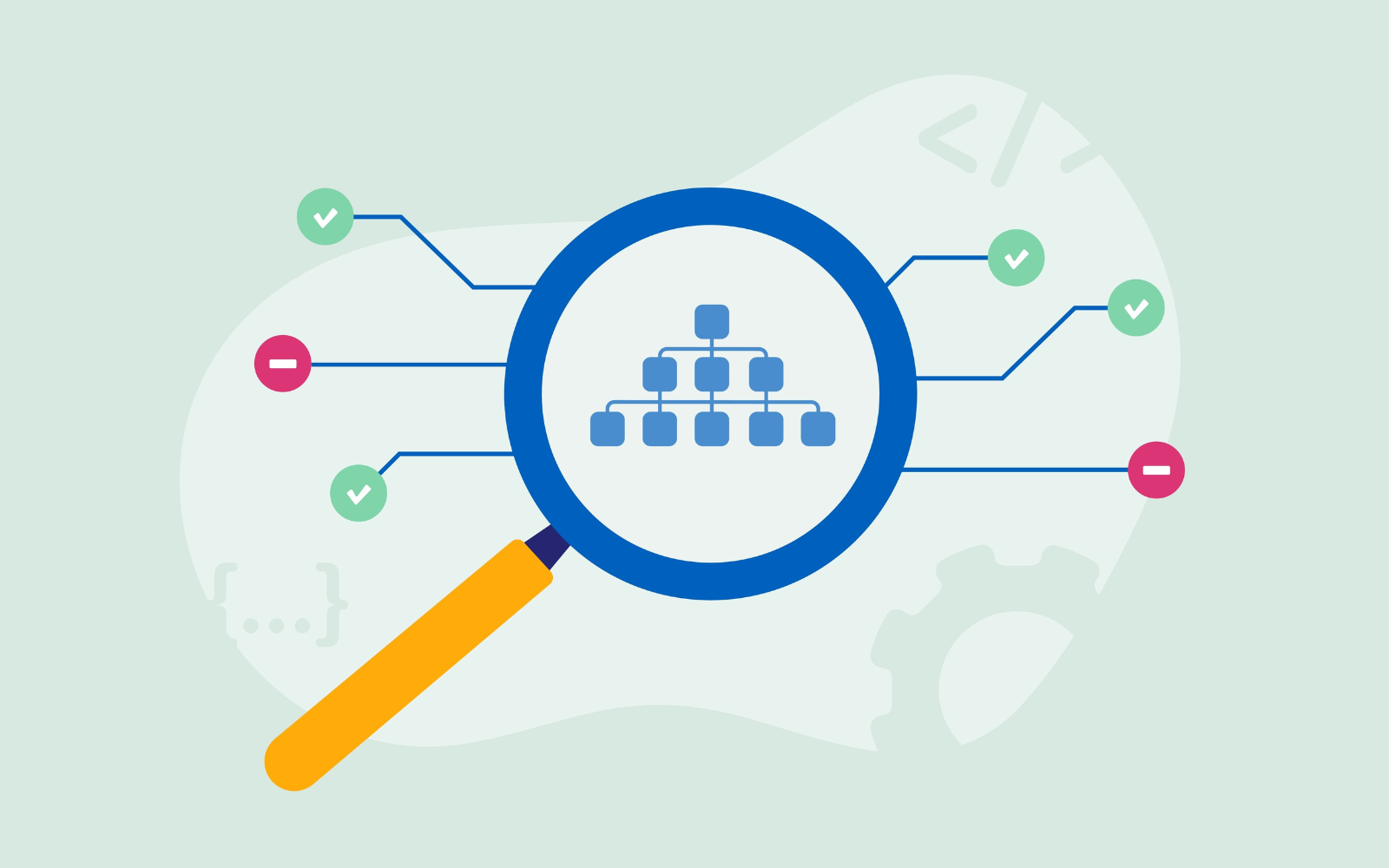Search engine optimization (SEO) is the backbone of digital marketing, helping search engines discover, understand, and rank your web pages in organic search results.
Whether you're optimizing for Google—the dominant search engine—or other search engines, SEO is essential for boosting your website’s visibility and attracting organic search traffic.
At its core, SEO involves using relevant keywords, improving site structure, and creating high-quality content that aligns with user intent. Technical SEO, on-page SEO, and off-page SEO all play vital roles in enhancing search engine rankings and performance.
Tools like Google Search Console, SEO tools, and Google Analytics help monitor your SEO strategy and ensure you're meeting your goals.
By conducting keyword research, optimizing title tags and internal links, and providing descriptive URLs and alt text, you’re helping search engines work efficiently to index pages and deliver your content on search engine results pages (SERPs).
A strong SEO journey is about delivering valuable content that satisfies search queries while improving page speed and user experience.
Understanding how search engines work and following best practices from resources like Google Search Central can significantly improve your search engine traffic—and ultimately grow your digital presence.
What Is SEO and Why Is It Important in Digital Marketing?

Search engine optimization (SEO) is a core component of digital marketing that focuses on improving your website’s visibility in search results.
By optimizing your site for search engines like Google, Bing, and other major platforms, you help ensure that your content appears when users search for relevant topics.
- SEO involves several practices—from conducting keyword research and improving site speed to optimizing on-page elements and building backlinks—all aimed at boosting your search engine rankings.
- These rankings determine how high your web pages appear in search results, which directly impacts your ability to attract organic traffic. One of the key goals of SEO is to make it easier for search engine crawlers to find, index, and understand your content.
- Tools like Google Search Console help monitor your site’s performance and identify technical issues that might hinder visibility in search engines.
Ultimately, search engine optimization helps your brand reach the right audience at the right time, drive more qualified traffic, and establish authority in your niche. In today’s competitive online landscape, a strong SEO strategy is essential for long-term success in digital marketing.
How Do Search Engines Work to Find and Rank Web Pages?

Understanding how search engines work is essential to improving your visibility in organic search results. From crawling your site to ranking your pages, here’s how major search engines discover, organize, and evaluate web content.
1. Crawling: How Search Engines Discover Content
Search engines start by crawling the web—scanning billions of pages using bots (also called search engine crawlers). These bots follow multiple URLs, read your title tag, and analyze internal links to find new or updated content.
To improve crawling, make sure your site is fast (use a paid speed tool if needed), well-structured, and includes relevant meta tags.
2. Indexing: Organizing the Web
Once content is crawled, it’s added to the search engine’s index—a massive database of web pages. To ensure your pages get indexed, optimize your SEO work by avoiding duplicate content and ensuring every page has a clear title, unique meta description, and logical structure.
Using tools like Google Search Console can help verify if your index pages are being properly included.
3. Ranking: Determining Search Position
After indexing, search engines rank content based on hundreds of factors, including relevance, user intent, and authority. High-quality content, optimized meta tags, descriptive title tags, and relevant forum posts can improve your rankings.
While paid advertising can boost visibility, true SEO success comes from consistent, optimized content that earns traffic through organic search.
A Few Tips for Better SEO
- Use clear title tags and descriptive meta descriptions
- Avoid thin or duplicate content across multiple URLs
- Engage in quality link-building through blogs and forum posts
- Focus on search engine optimization strategies rather than relying solely on paid advertising
By understanding and optimizing each stage—crawling, indexing, and ranking—you can make your website more visible on major search engines and grow your presence in organic search.
What Are the Different Types of SEO (On-Page SEO, Off-Page SEO, and Technical SEO)?

To make your website more visible in organic search results, you need to understand the three main types of search engine optimization. Each plays a unique role in helping you rank pages effectively and improve your overall SEO work.
1. On-Page SEO: Optimizing Content Directly on Your Website

On-page SEO involves optimizing the elements within your site to make it more understandable and valuable for both users and search engines.
This includes writing valuable content that satisfies search intent, using keyword-rich meta descriptions, and adding image alt text to improve accessibility and indexing.
A strong on-page SEO strategy ensures each page is designed to rank well by aligning with targeted keywords and user needs. This makes SEO important not just for visibility but also for user engagement and conversions.
Key elements:
- High-quality, keyword-focused content
- Clear meta descriptions and headings
- Descriptive image alt text
- Strategic internal linking
2. Off-Page SEO: Building Authority Through External Signals

Off-page SEO focuses on activities outside your website that influence your rankings. These include backlinks from reputable sources, brand mentions, and shares on social media. These external signals build trust and authority, which helps rank pages higher in organic search.
While you can't control all off-page factors, quality content and smart outreach strategies are essential. Effective off-page SEO shows that others find your content trustworthy and worth referencing—making your SEO work more impactful.
Key tactics:
- Earning backlinks from credible sites
- Influencer and social media engagement
- Guest blogging and brand citations
3. Technical SEO: Ensuring Your Website Functions Optimally for Crawling and Indexing

Technical SEO is all about optimizing the site architecture and backend structure so that search engine bots can easily crawl, index, and understand your website. Fast page speed, mobile-friendliness, structured data, and optimized Core Web Vitals are critical here.
A technically sound site improves user experience and makes it easier for search engines to deliver your pages in relevant search results. Without proper technical SEO, even the best content can fail to perform.
Focus areas:
- Clean and crawlable site architecture
- Fast page speed and mobile optimization
- Healthy Core Web Vitals scores
- XML sitemaps and robot.txt optimization
By balancing on-page, off-page, and technical SEO, you can build a strong foundation for lasting visibility in organic search and ensure your SEO work delivers long-term results.
How Do You Conduct Keyword Research for SEO Success?

Keyword research is a crucial step in any successful SEO strategy. It involves identifying the words and phrases your target audience types into search engines when looking for information, products, or services.
By understanding these search terms and their intent, you can create content that aligns with user needs, improves search visibility, and drives relevant traffic to your website.
1. Understand Your Target Audience and Search Intent
Start by thinking like your audience. What search queries are they typing into search engines? Are they looking for information, comparing options, or ready to buy? Understanding search intent ensures your content aligns with user goals and ranks higher in organic search traffic.
2. Use SEO Tools to Find Keyword Ideas
Leverage tools like Google Keyword Planner, Ahrefs, or SEMrush to generate keyword ideas. These tools reveal keyword volume, competition, and how often search engines return paid search results versus organic ones. The right tools help uncover valuable keyword opportunities that drive search rankings.
3. Identify Long-Tail and High-Intent Keywords
Long-tail keywords are more specific and often show clear intent. They may have lower search volume but convert better.
For example, instead of targeting “shoes,” a long-tail keyword like “best running shoes for flat feet” is more actionable. This also makes it easier to attract links and earn incoming links from other websites.
4. Group and Organize Keywords by Topic
Organizing keywords into thematic clusters helps structure your content strategy. Each topic cluster can support a pillar page and related blog posts, making it easier for web crawlers to understand your site and for your pages to appear in relevant search results.
5. Analyze Competitors and Search Engine Results Pages (SERPs)
Check what’s currently ranking on search engines for your target keywords. Look at the top-performing pages and examine how your competitors are using keywords. This gives insight into how SEO stands in your niche and what it takes to compete in search rankings.
6. Track Keyword Performance Over Time
Once your content is live, monitor your keyword positions and traffic. Use tools like Google Search Console or analytics platforms to track changes in organic search traffic, keyword visibility, and how often you appear alongside paid search results. Adjust your strategy based on performance.
How Does Google Search Rank Web Pages in Organic Search Results?

Google’s mission is to organize the world’s information and make it universally accessible and useful. To do that, it uses complex algorithms to decide which pages show up first in organic traffic results. Here’s how it works—step by step.
1. Crawling and Indexing: How Google Discovers Web Pages
Google uses search engine optimization (SEO) crawlers (also known as spiders or bots) to crawl and index billions of web pages. These search engines scan your site, follow links, and gather information from structured data and HTML tags.
- A well-optimized site helps Google understand your content faster, which is the foundation of a strong SEO strategy.
2. Understanding User Intent and Relevance
Google analyzes search queries to understand what the user really wants. Matching content to relevant keywords is essential.
- Whether someone is searching to learn, compare, or buy, Google aims to serve pages that satisfy the exact user intent. A skilled SEO specialist knows how to map content to the intent behind keywords to improve visibility.
3. Evaluating Content Quality and Authority
High-quality content that demonstrates expertise, trustworthiness, and value is a major ranking factor. Google looks at factors like in-depth coverage, readability, and originality. Content that gets shared on social media sites or earns organic traffic through natural discovery is also seen as more authoritative.
4. Technical Performance and User Experience
Site speed, mobile responsiveness, and clean code structure all impact your site’s technical performance. Google uses Core Web Vitals and other UX signals to measure how fast and smooth a site feels to users.
- Fast-loading pages with a good layout and minimal errors are crucial for modern search engine opyimization (SEO stands for this).
5. Link Signals and Internal Architecture
Google assesses the internal architecture of your website—how your pages are linked together—and the quantity and quality of backlinks (external links from other authoritative sites).
- Internal linking helps distribute authority, while incoming links from reputable domains signal trust and authority. Even social media sites can help boost visibility and contribute indirectly to rankings.
6. Continuous Learning Through User Behavior
Google’s algorithm evolves by learning from user behavior—click-through rates, bounce rates, and time spent on page all provide feedback.
- If users consistently engage with a page for a particular search query, it’s more likely to climb in the search engine rankings. This is why constantly improving content is key to long-term engine optimization.
Ranking on Google isn't just about stuffing pages with relevant keywords—it’s about providing valuable experiences, aligning with intent, and building trust.
A good SEO specialist considers every ranking factor, from content quality and links to structured data and performance, as part of a smart SEO strategy. This is how SEO stands as a long-term driver of success in organic traffic.
Why Are Descriptive URLs Important for Helping Search Engines Understand Your Content?

A descriptive URL is a clean, readable web address that clearly communicates what the page is about—both to users and search engines. While often overlooked, URLs play a critical role in SEO by improving discoverability, usability, and the overall site structure.
1. Search Engines Use URLs to Understand Content Relevance
Search engines rely on many signals to understand and rank a webpage, and URLs are one of the first elements crawled. A descriptive URL provides context about the content’s topic. For example:
- ✅ example.com/best-laptop-under-500
- ❌ example.com/product?id=78945
The first URL immediately signals to both users and search engines that the page is about affordable laptops. When crawlers scan your website, a well-structured URL helps them categorize and rank your content appropriately in search results.
2. Descriptive URLs Improve User Experience
URLs are visible in the browser bar, in search snippets, and when shared. Descriptive URLs help users understand what to expect from a link, increasing the likelihood they’ll click. For instance, if a user sees a URL like example.com/healthy-breakfast-recipes, they instantly know the content is relevant to their query.
- This clarity also reduces bounce rates by aligning user expectations with actual page content—an indirect ranking factor that signals user satisfaction.
3. They Support Better Link Building and Social Sharing
URLs that are clean and meaningful are easier to share across platforms, especially on social media or forums. They appear more trustworthy and user-friendly compared to long, cryptic URLs with parameters or numbers. For example:
Trustworthy: example.com/seo-basics-for-beginners
- Confusing: example.com/page?x=456&ref=abc
Descriptive URLs are also more likely to earn backlinks because people and websites prefer to link to content that is understandable at a glance. Better links mean improved authority, which can help your content rank higher in search results.
4. They Enhance Internal Linking and Site Structure
Organized and descriptive URLs contribute to a logical site structure. When your URLs follow a consistent format—like example.com/category/topic—it makes it easier for both users and crawlers to navigate your website.
- This improves crawl efficiency, which ensures more of your pages are discovered and indexed. It also boosts SEO by reinforcing topical relevance across connected pages. When internal links use keyword-rich, descriptive URLs, it strengthens the theme of each section of your site.
5. They Allow Better Targeting for Specific Keywords
Including relevant keywords in URLs helps reinforce a page’s topic. While keywords in URLs are a minor ranking factor, they still add to the overall search engine optimization effort.
This is especially useful when multiple pages target similar topics—you can differentiate them using specific keywords in the URLs.
Example:
- example.com/seo-tools-for-beginners
- example.com/seo-tools-for-agencies
Each is keyword-rich, descriptive, and targeted for a unique audience, aiding both SEO and user navigation.
Frequently Asked Questions(FAQs)

1. How Do External Links Influence Your Website’s Search Engine Rankings?
- External links from authoritative sites act as trust signals for search engines, boosting your website’s credibility and visibility.
- These backlinks can improve domain authority and help your content rank higher in search results. Quality matters more than quantity—focus on earning links from relevant, high-authority sources.
2. How Can Descriptive Alt Text Improve SEO and Accessibility?
- Descriptive alt text improves accessibility by helping screen readers describe images to visually impaired users.
- It also aids search engines in understanding image content, contributing to better image SEO. Including relevant keywords in alt text can enhance visibility in image searches and support overall content relevance.
3. What Are the Most Common SEO Mistakes to Avoid?
- Common SEO mistakes include keyword stuffing, ignoring mobile optimization, having duplicate content, broken links, slow site speed, and missing meta tags.
- Failing to use structured data or neglecting internal linking can also hurt rankings. Avoid these to ensure better indexing, visibility, and search performance.
4. What Are a Few Simple SEO Tips for Beginners Starting Their SEO Journey?
- Start by researching relevant keywords, writing valuable content, optimizing title tags and meta descriptions, and improving site speed.
- Use internal links and ensure your website is mobile-friendly. Submit your sitemap to Google Search Console. Most importantly, focus on helping users, not just search engines.
Conclusion
Search engine optimization (SEO) is more than just a digital marketing tactic—it's a long-term strategy that helps you build visibility, authority, and sustainable organic traffic.
By understanding how search engines work, optimizing your website through on-page, off-page, technical SEO, and content optimization, you position your content for success.
Tools like Google Search Console, descriptive URLs, and well-structured content further enhance your chances of ranking. Whether you're a beginner or refining your SEO strategy, focusing on user experience and relevance is key.
In today’s digital landscape, SEO remains essential for online growth and competitive advantage.

.jpg)
.jpg)
.jpg)
.jpg)
.jpg)
.jpg)
.jpg)
.jpg)
.jpg)
.jpg)
.jpg)
.jpg)
.jpg)
.jpg)
.jpg)
.jpg)
.jpg)
.jpg)
.jpg)
.jpg)
.jpg)
.jpg)
.jpg)
.jpg)
.jpg)

.png)
.png)
.png)
.png)
.png)
.png)
.jpg)
.jpg)
.svg)

